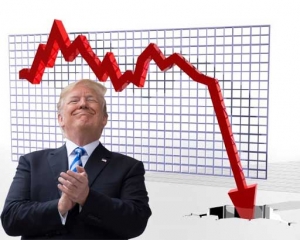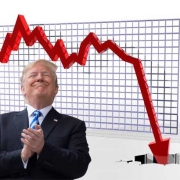The American elections 2020 and the global economic slowdown

Introduction
An Epidemic is the appearance and spread of an infectious disease that strikes at the same time and in the same place a large number of people, animals (epizootic) or plants (epiphytic). We regularly talk about an influenza epidemic. If the outbreak spreads over a large geographic area, we speak of a pandemic.
Since antiquated times, history has cleared out us a few follows of these irresistible infections that have terrorized social orders. In the middle ages, leprosy reappears in Europe around the year 1000 and causes great terrors. Lepers are isolated in junk rooms, outside of towns and villages. Lepers, accepted to be had, had to announce their nearness by waving little bells to let others pay attention, Lepers are here. Leprosy practically disappeared in the 16th century. However, outbreaks have remained in some geographic regions.
The epidemic is an excellent historical reality, long as little known by historians as feared by contemporaries. History of epidemics, but also outbreaks of history: do not diseases appear with their independent lives, asserting themselves, expanding, diminishing and disappearing? Own rhythms, no doubt, but correlated with subsistence crises, mentalities, trade, wars, or pilgrimages. The study of epidemics is thus at the crossroads of disciplines. In essence, it belongs, of course, to medicine, but also human geography by its modes of propagation and its routes, to social psychology and demography by its effects, to the Finally, history, whose structural transformations it accelerates or slows down and whose conjunctures it modifies.
COVID-19, according to WHO, is a pandemic, but from the point of view of some religion, it is divine punishment or a test for man, and from another people perspective, COVID-19 made by man. Different opinions about COVID-19 are made every day to explain how it comes? And why is it here?. In this series of articles, I won’t answer these questions, not even try. I will take COVID-19 as an obstacle that man has to go through it, and I will discuss what comes after passing this obstacle? Furthermore, what could happen to lifestyle and standard life systems?.
As I Expects many changes in the world’s near future at many levels of life, healthcare, politics, science, business, economy culture, and education will take place as a result of what we are facing now.
In the past centuries, the world was not able to cope with change happen with epidemic and pandemic diseases because they did not have the idea of globalism or one planet. Nowadays, we have this idea because of communication and information breakthrough in the whole world, and this will make the world cope with the change with Corona-virus.
World’s politics near future
(1) The American Elections and the global economic slowdown
Poker game in 2020, the current American President has an excellent hand to play. If on the one side the Democrats could have put the “Trump” card on the table with the start of the impeachment procedures, and on the other, a slowdown in the global economy, due to COVID-19, could favor them. However, no one should underestimate the formidable skills of “Donald Trump” as a politician from the election campaign, not least his ability to mobilize the main supporters of his cause before next year’s presidential election.
“It’s the economy, beauty”: this slogan coined for the first time by the strategist of Bill Clinton’s election campaign during the 1992 presidential race remains current, considering that today the health of the American economy will play a significant role in determining the next tenant in the White House. While Trump’s democratic rival will undoubtedly have a chance to point out a slowdown in the US economy in 2020, market expectations of a downturn next year may turn out to be excessive.
The US economy is more likely to move forward, an opinion shared by the economists of the International Monetary Fund, who forecast growth of 2.1% in 2020, down from the 2.4% expected this year.
However, there is a sense, rightly, of the feeling that the growth prospects of the United States remain fragile, given the economic slowdown we are witnessing worldwide – partly due to Trump’s protectionist policies – which will probably continue in 2020 and beyond. Regardless of the outcome of next year’s elections, Trump’s aggressive approach to China since he became President has fueled a competitive rivalry between the two nations that will define global prospects both economically and politically for the foreseeable future.
For investors, some comfort can be drawn from the historical performance of the stock market because of the American presidential election. A study of the election cycles between 1952 and 2000 showed that an investor holding a portfolio of securities that mirrors the S&P 500 index in the 27 months preceding the elections in the United States (from October 1 of the second year of the presidential term to December 31 of the election year) recorded significant returns.
In a year of elections for the United States, the polarizing figure of Donald Trump is bound to dominate the news and remain a disruptive factor in global markets. Politics has always had the power to distract and shift attention away from the fundamentals. The current rivalry between the US and China will continue to influence the markets for the next few years. In such a climate, anchoring investment decisions to pure analysis and research cannot be an underestimated factor.
Concerning the current global growth prospects, it is worrying that the central banks of most western developed countries have few cartridges at their disposal to counter a sharp recession. The outgoing President of the ECB Mario Draghi has called on the governments of the Eurozone to increase their fiscal spending to support their respective economies.
This is undoubtedly the most comfortable way, which will probably be unusual for politicians aiming for re-election. Interestingly, the IMF also seems to encourage higher spending by governments these days for countries where “economic activity has weakened or could slow down rapidly” and where “space to loosen monetary policy is limited.”
It should also be borne in mind that global manufacturing activity has been falling for several months, even if the level of the slowdown has eased, while global exports have marked the second-worst drop since October 2012, with Germany in the lead. As for China, the second-largest economy globally, GDP growth has fallen to almost its lowest in the past 30 years, raising doubts about its ability to help boost the global economy, as had happened after the global financial crisis in 2007-2008.
All these economic indications suggest a global economy that is at a turning point. Moderate further growth is possible, but a damaging recession is also possible. It is difficult to find yourself in this situation during an election year for the United States, the most likely is damaging recession along with Trump winning 2020 elections.
To be continued,




Leave a Reply
Want to join the discussion?Feel free to contribute!